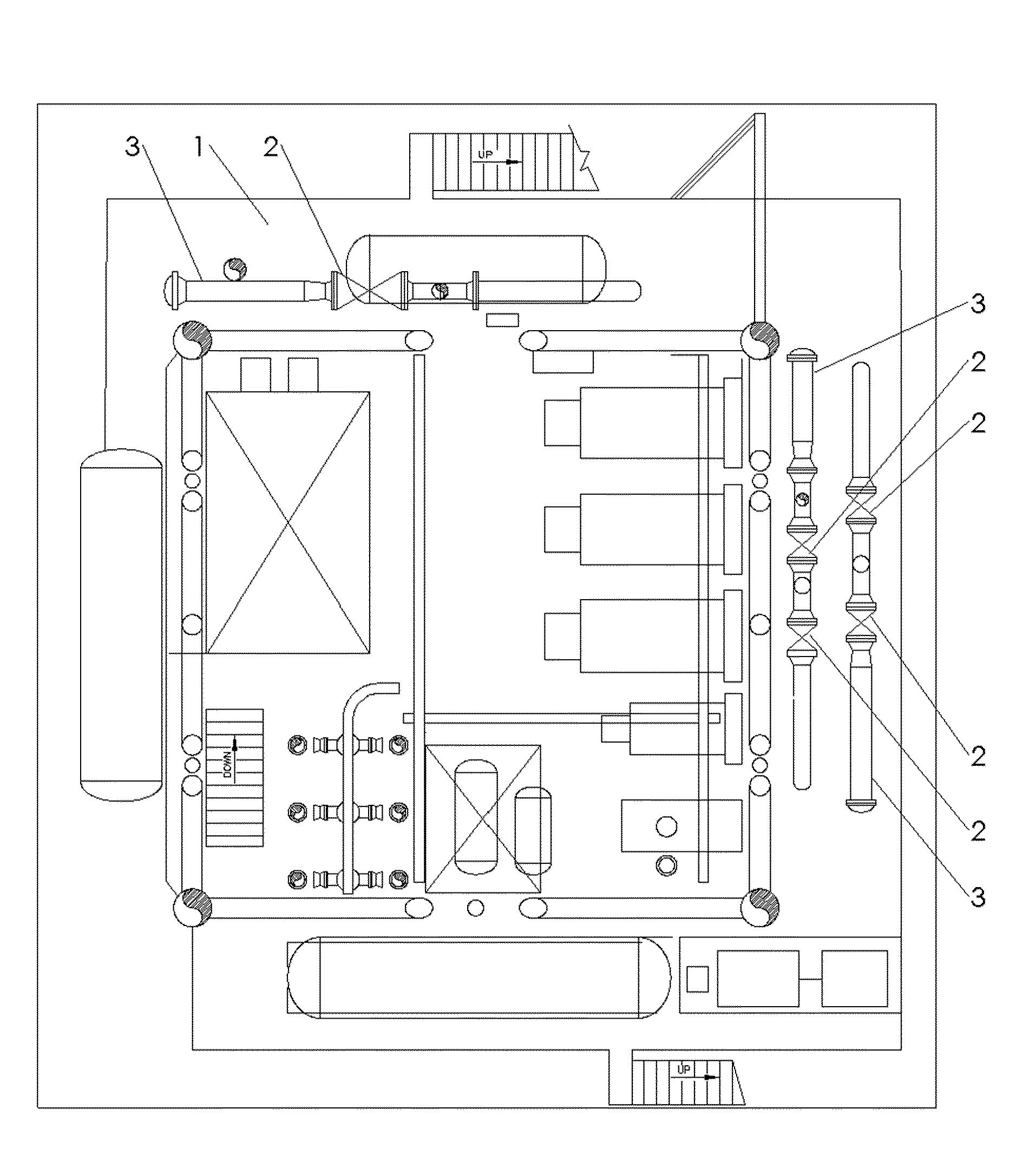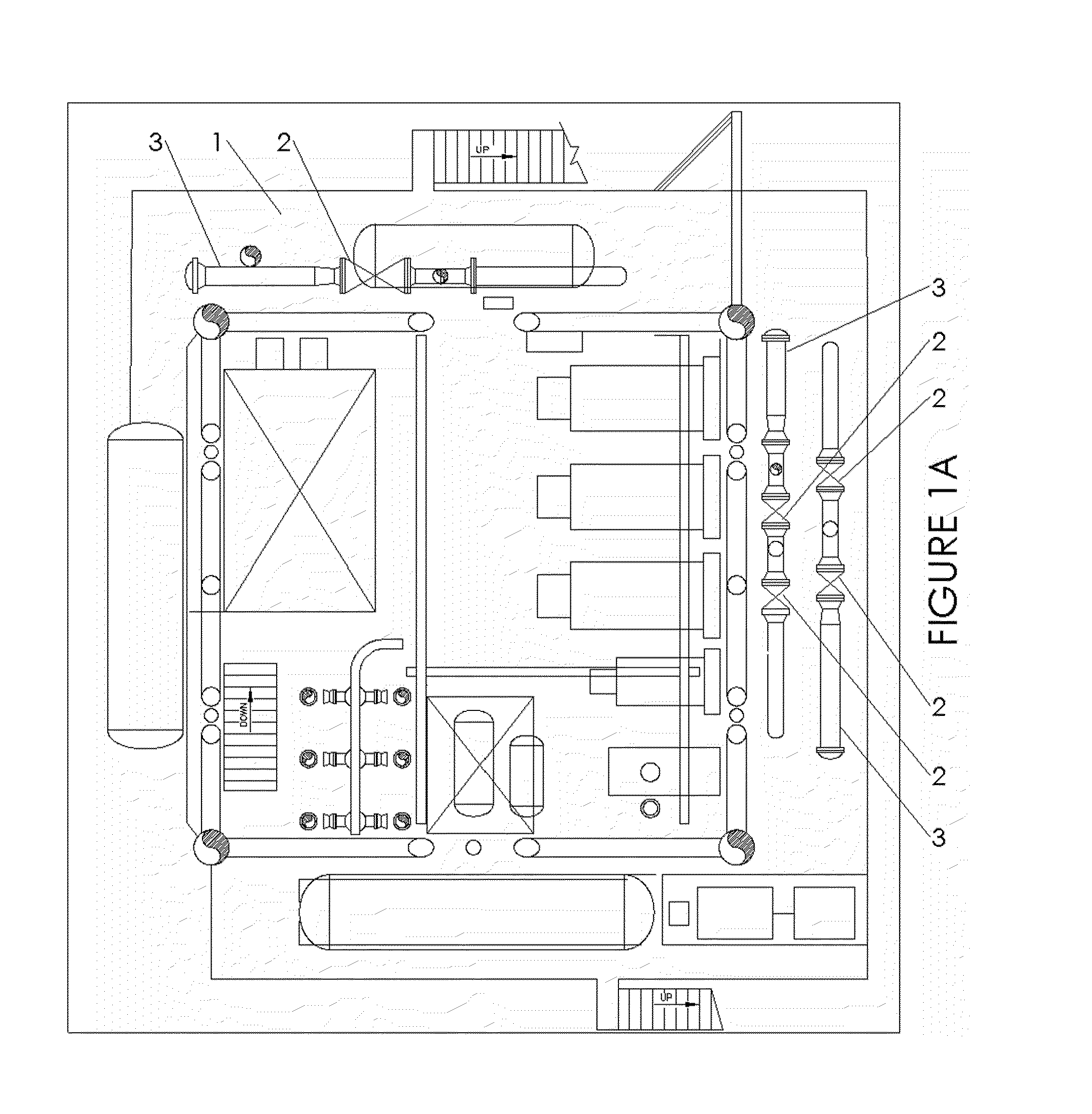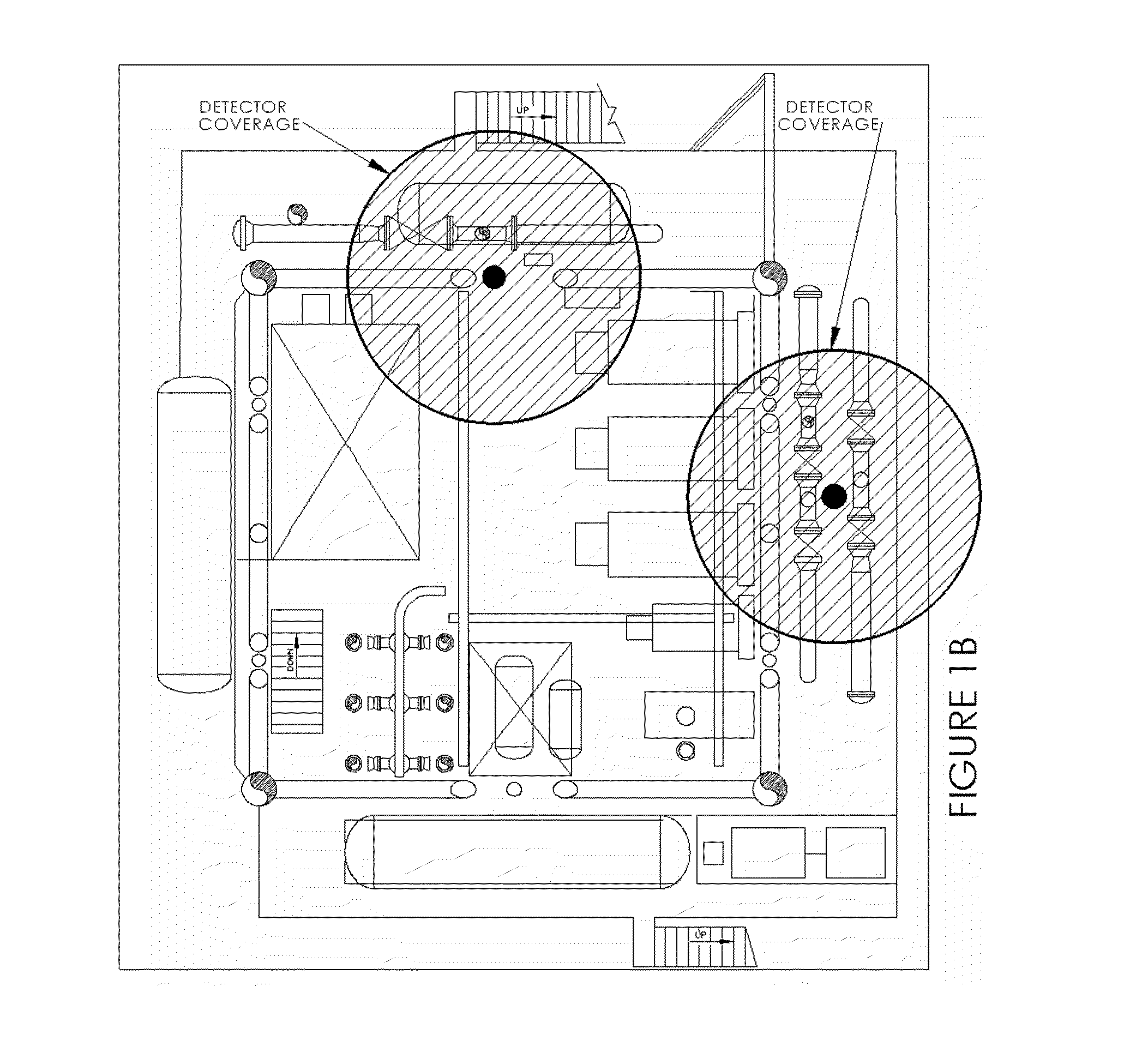Detector and Methods of Detecting
a detector and ultrasonic technology, applied in the direction of electrical/magnetic means, structural/machine measurement, geophysical measurements, etc., can solve the problems of increasing the number of sensors required to detect wear, gas leaks are and the narrowband test signal produced by the piezoelectric transducer is more susceptible to environmental extremes of temperature than the broadband pressurised leak signal. , to achieve the effect of simple construction and increased temperature stability
- Summary
- Abstract
- Description
- Claims
- Application Information
AI Technical Summary
Benefits of technology
Problems solved by technology
Method used
Image
Examples
Embodiment Construction
[0089]Referring to FIG. 1A a part of an industrial drilling plant generally identified by reference numeral 1 comprises multiple valve stations 2 between receiver pipe racks 3 and underground drilling heads (not shown). The valve stations 2 regulate input from the drilling heads (not shown) to the next process deck via pipe racks 3. As such the plant provides a pressure regulation function for gas (e.g. natural gas) between drilling heads and the process facility on the plant. It is important to monitor the valves and pipes for any leaks; such leaks could be a potential explosion hazard. FIG. 1B shows where two detectors have been mounted in the plant and their respective areas of coverage in which a gas leak can be detected. Any gas leaks that occur within the shaded areas in FIG. 1B can be detected and the appropriate alarms raised by the detectors.
[0090]Referring to FIGS. 2, 3 and 4 an ultrasonic gas leak detector generally identified by reference numeral 10 comprises a housing 1...
PUM
| Property | Measurement | Unit |
|---|---|---|
| ultrasonic frequency | aaaaa | aaaaa |
| sound pressure level | aaaaa | aaaaa |
| sound pressure level | aaaaa | aaaaa |
Abstract
Description
Claims
Application Information
 Login to View More
Login to View More - R&D
- Intellectual Property
- Life Sciences
- Materials
- Tech Scout
- Unparalleled Data Quality
- Higher Quality Content
- 60% Fewer Hallucinations
Browse by: Latest US Patents, China's latest patents, Technical Efficacy Thesaurus, Application Domain, Technology Topic, Popular Technical Reports.
© 2025 PatSnap. All rights reserved.Legal|Privacy policy|Modern Slavery Act Transparency Statement|Sitemap|About US| Contact US: help@patsnap.com



